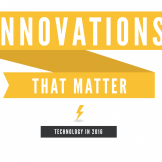Leaders Teaching Leaders: Leadership Development in the FAA’s Air Traffic Organization
Sean Corbett, Program Manager at the Federal Aviation Administration (FAA), gave an excellent presentation on the FAA’s Leaders Teaching Leaders (LTL) Program at the Training Officer’s Consortium’s Annual Executive Institute in Ocean City, MD this week. Sean shared his experience in standing up and launching an LTL Program at FAA and highlighted the elements that… Read more »










